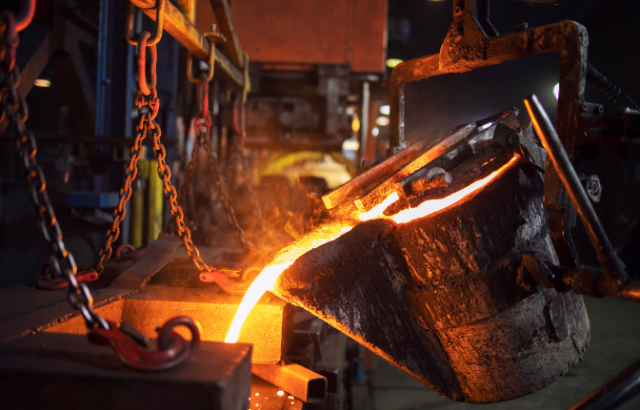What a fair deal for ex-steelworkers would look like as the industry decarbonises
Chris McLachlan, from the School of Business and Management at Queen Mary University of London, has written for 'The Conversation' on the recent plans to cut almost 3,000 jobs at the UK’s largest steelworks.

Plans to cut almost 3,000 jobs at the UK’s largest steelworks, Tata Steel in Port Talbot, south Wales, mark another devastating chapter in a long history of deindustrialisation.
The closure of steel plants in Ravenscraig, Ebbw Vale and Redcar will be haunting the steelworkers in Port Talbot, serving as a reminder of what is at stake. Although this so-called “restructuring” has sadly become the norm, former workers at other large steelworks are still scarred by loss of income, identity and skills in the post-redundancy transition.
Tata has expressed regret at the hand it has dealt workers. There are modest signs it will work with trade unions and governments on what have been described as “transition boards”. This is to be backed by a £130 million support package that could arguably ensure the restructuring is conducted responsibly. Also, the intimacy between the steelworks and the local community mean Tata is compelled to provide support.
The steelworks is Port Talbot’s largest private sector employer. Workers, families, residents and local businesses depend on the steelworks to sustain their livelihoods and the fortunes of the town.
What’s more, according to ONS data Port Talbot is one of the most deprived places in the UK, and a focus of the government’s “levelling up” agenda. Any job losses will reverberate throughout the region and their impact will be reinforced by wider inequalities across south Wales.
The move by Tata is because of environmental pressures to decarbonise steel production, primarily from coal-powered blast furnaces like those in Port Talbot. Instead, Tata will invest in an electric arc furnace that recycles scrap steel through an electrification process before being cast into steel products.
Despite its emissions, steel is considered one of six “foundation industries” as it remains essential for “green” products such as wind turbines, electric vehicles and low carbon homes.
Jobs v environment
Port Talbot therefore signifies another fateful episode in the tension between saving jobs versus saving the environment. This heightened vulnerability of the steel industry to environmental pressures brings the notion of a “just transition” into sharp relief.
With its origins in the international trade union movement, a just transition focuses on ensuring that workers and communities most affected by the shift to a greener economy do not end up worse off. This can be achieved through dialogue between governments, companies, workers and community groups, and social interventions aimed at protecting jobs for the future.
Planning for such transitions is not new to the industry. At Tata Steel Europe in the Netherlands, unions and management recently concluded an agreement known as the “Green Steel Social Contract”. The agreement maps out a just transition pathway that involves measures such as employment guarantees, monetary incentives related to retention and individual tailor-made employability plans.
Similarly, Swedish steelmaker SSAB has been working with trade union IF Metall for a number of years over the switch to greener steel production while securing jobs in the process. Although there are different national contexts, they demonstrate what at least might be possible.
What next for steelworkers
Part of the negotiations between stakeholders in a just transition process is identifying the types of education, training and qualifications that steelworkers might need to retrain. For example, although production through electric arc furnaces is less labour-intensive, more jobs may emerge in the manufacture of end products for which steelworkers would be well suited.
Scrap steel can create blooms, billets and rods for use in construction and the production of industrial equipment. Other possibilities lie in learning new digital skills to help with robot-assisted production in the steel sector.
A huge caveat to retraining prospects for steelworkers is the extent of funding along with whether a meaningful industrial strategy reflects the regional labour market. Government intervention here is necessary to make sure the new skills match the available jobs. Further still, retraining raises questions over whether new jobs are of a similar quality, income and status, or if workers can relocate to new areas for work.
Community union found that following the closure of a large steel plant in Redcar, north-east England, those earning £30,000 a year dropped from 80% pre-closure to 35% post-closure, and 18% took two years to find a job post-redundancy. These constraints cannot be taken for granted, as they further compound the consequences of job losses for steelworkers.
A just transition should champion the needs of workers and communities while also recognising the needs of regional economies. This is where the steel unions come into play as they are strongly embedded in the workforce and local community. And perhaps regrettably, episodic restructuring has meant unions are well versed in mitigating its effects.
An alternative transition plan proposed by unions was already rejected by Tata. Whatever its reasons, Tata cannot deny the expertise and insights the unions have of the lives of workers and the south Wales region. If Tata seeks a transition that is just and socially acceptable to workers and communities, then it has no choice but to heed the legitimacy of the unions. For steelworkers in Port Talbot, “hope dies last”.
This article first appeared in 'The Conversation' on 24 January 2024.
Related items

29 November 2024

12 November 2024
